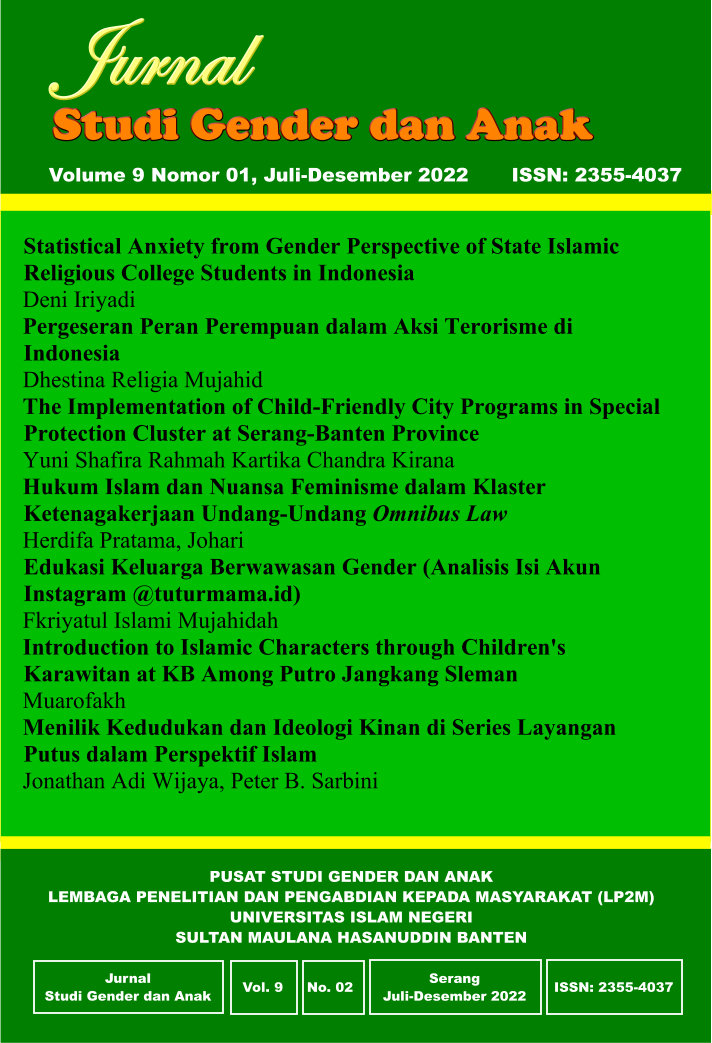The Implementation of Child-Friendly City Programs in Special Protection Cluster at Serang-Banten Province
DOI:
https://doi.org/10.32678/jsga.v9i02.6787Keywords:
Implementation, Child-Friendly City, Special ProtectionAbstract
This research was carried out at the Office of Women's Empowerment and Child Protection in Serang City and the Serang City Social Service. Child-Friendly City is a district/city development system that integrates government, community and business commitments and resources that are planned in a comprehensive and sustainable manner in policies, programs and activities to fulfill children's rights. The objectives of this study are: 1) To find out how the implementation of the child-friendly city program in Serang City in the special protection cluster. 2) To find out the inhibiting factors for the implementation of the child-friendly city program in Serang City in the special protection cluster. This study uses the Regulation of the State Minister for Women's Empowerment and Child Protection No. 12 of 2011 concerning Child-Friendly Regency/City Indicators. This study looks at the special protection cluster with indicators a) Percentage of children who need special protection who receive services b) Percentage of cases of children dealing with the law that are resolved with a restorative approach c) There is a disaster management mechanism that pays attention to the interests of children d) Percentage of children who are treated free from the worst forms of child labor. The type of research used in this study is qualitative with a descriptive approach. Based on interviews, documentation, and observations in the field, it can be concluded that the Implementation of the Eligible City Program in Serang City in the Special Protection Cluster has not run optimally or has been carried out properly. This can be seen from the case of children who need special protection which is still increasing every year. In addition, there are still obstacles such as lack of human resources, conditions in the field, and lack of adequate facilities.
Downloads
References
Andal, A. G. (2021). Children’s spaces in coastal cities: challenges to conventional urban understandings and prospects for child-friendly blue urbanism. Children’s Geographies. https://doi.org/10.1080/14733285.2021.1962515
Arisoy, N. (2019). Child-friendly city approaches. In New Approaches to Spatial Planning and Design: Planning, Design, Applications (pp. 359–368). https://api.elsevier.com/content/abstract/scopus_id/85113416496
Biggs, S. (2015). Age- and Child-Friendly Cities and the Promise of Intergenerational Space. Journal of Social Work Practice, 29(1), 99–112. https://doi.org/10.1080/02650533.2014.993942
Bridgman, R. (2004). Criteria for best practices in building child-friendly cities: Involving young people in urban planning and design. Canadian Journal of Urban Research, 13(2), 337–346. https://api.elsevier.com/content/abstract/scopus_id/14644390933
Chawla, L. (2016). Children’s rights to child-friendly cities. In Handbook of Children’s Rights: Global and Multidisciplinary Perspectives (pp. 533–549). https://doi.org/10.4324/9781315766300
Creswell, J. W. (1994). Research design : qualitative & quantitative approaches. Thousand Oaks, Calif. : Sage Publications, c1994. https://trove.nla.gov.au/work/11696726
Drianda, R. P. (2015). The Impact of Bandung City’s Rapid Development on children’s Independent Mobility and Access to Friendly Play Environments. Children and Society, 29(6), 637–650. https://doi.org/10.1111/chso.12105
Graaf, S. van der. (2020). The right to the city in the platform age: Child-friendly city and smart city premises in contention. Information (Switzerland), 11(6). https://doi.org/10.3390/INFO11060285
Malone, K. (2015). Children’s Rights and the Crisis of Rapid Urbanisation: Exploring the United Nations Post 2015 Sustainable Development Agenda and the Potential Role for UNICEF’s Child Friendly Cities Initiative. International Journal of Children’s Rights, 23(2), 405–424. https://doi.org/10.1163/15718182-02302007
Mariana. (2019). Children Friendly Environment in City Settlement: Study case : orth Jakarta. In IOP Conference Series: Materials Science and Engineering (Vol. 508, Issue 1). https://doi.org/10.1088/1757-899X/508/1/012036
Moleong, L. J. (2021). Metodologi penelitian kualitatif. PT Remaja Rosdakarya.
Nikku, B. R. (2013). Crafting child-friendly cities: Evidence from biratnagar sub-metropolitan city, Eastern Nepal. Asian Social Work and Policy Review, 7(2), 135–150. https://doi.org/10.1111/aswp.12013
Nour, O. (2013). Building Child Friendly Cities in the MENA region. International Review of Education, 59(4), 489–504. https://doi.org/10.1007/s11159-013-9373-1
Nugroho, A. M. (2021). A child-friendly design for sustainable urban environment: A case study of Malang city parks. In IOP Conference Series: Earth and Environmental Science (Vol. 881, Issue 1). https://doi.org/10.1088/1755-1315/881/1/012060
Riggio, E. (2002). Child friendly cities: Good governance in the best interests of the child. Environment and Urbanization, 14(2), 45–58. https://doi.org/10.1177/095624780201400204
Rismanchian, O. (2007). Children participation in planning processes: The case of Child Friendly City project in post-earthquake Bam, Iran. Urban Design International, 12(2), 143–154. https://doi.org/10.1057/palgrave.udi.9000196
Riyanto, Y. (2001). Metodologi penelitian pendidikan. Surabaya: Sic, 398.
Rosmalinda. (2020). Child-friendly city; A strategy to provide child protection right in Medan. In IOP Conference Series: Earth and Environmental Science (Vol. 452, Issue 1). https://doi.org/10.1088/1755-1315/452/1/012112
Simoneti, M. (2000). Children and adolescents in the physical space: From a playground for children to a child friendly city or from measures to networks. Urbani Izziv, 11(1), 142–147. https://doi.org/10.5379/urbani-izziv-en-2000-11-01-006
Soeharnis, R. S. M. (2018). Issues in developing communication strategies for implementing child-friendly city policies. In E3S Web of Conferences (Vol. 74). https://doi.org/10.1051/e3sconf/20187410017
Whitzman, C. (2010). The journey and the destination matter: Child-Friendly Cities and children’s right to the City. Built Environment, 36(4), 474–486. https://doi.org/10.2148/benv.36.4.474
Downloads
Published
Versions
- 2023-02-23 (2)
- 2022-12-25 (1)
Issue
Section
License
Copyright (c) 2022 Yuni Shafira Rahmah, Kartika Chandra Kirana

This work is licensed under a Creative Commons Attribution-ShareAlike 4.0 International License.




